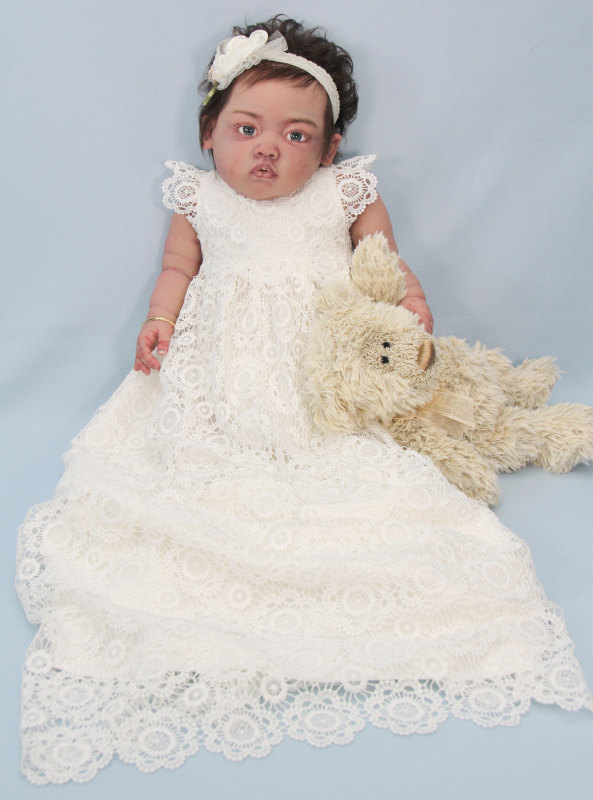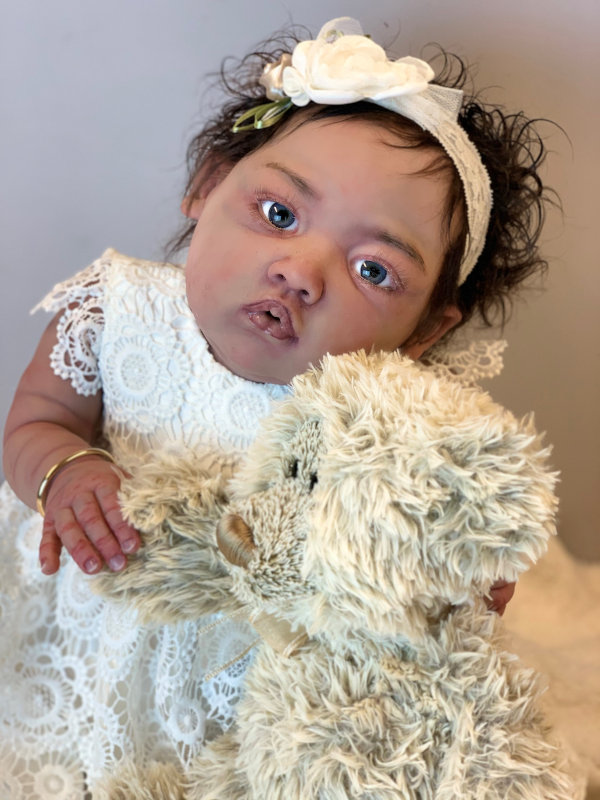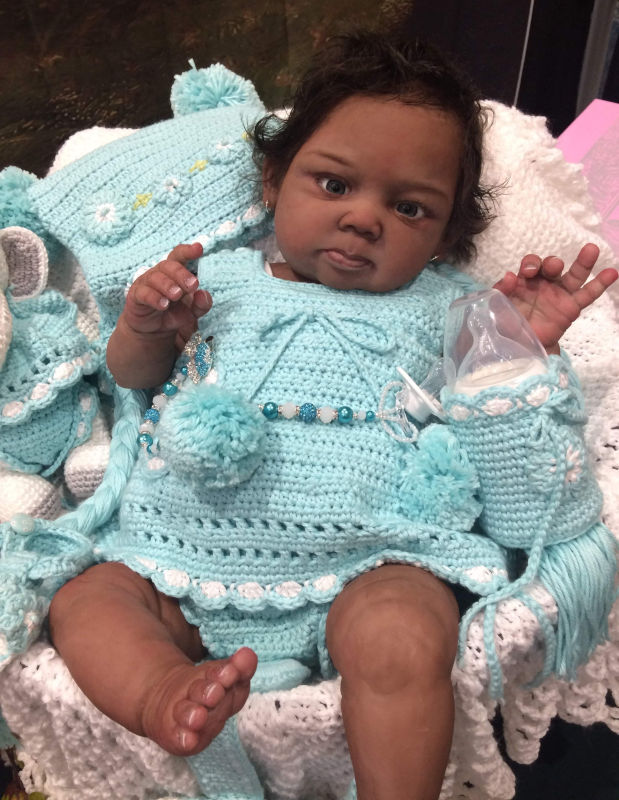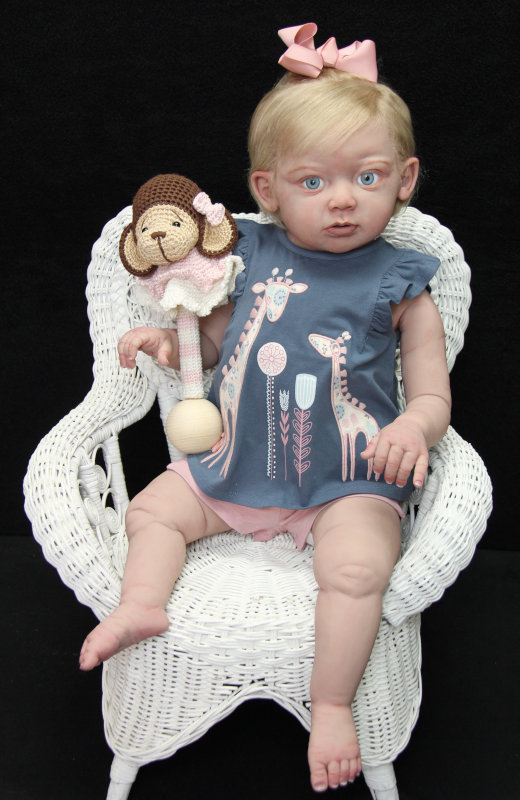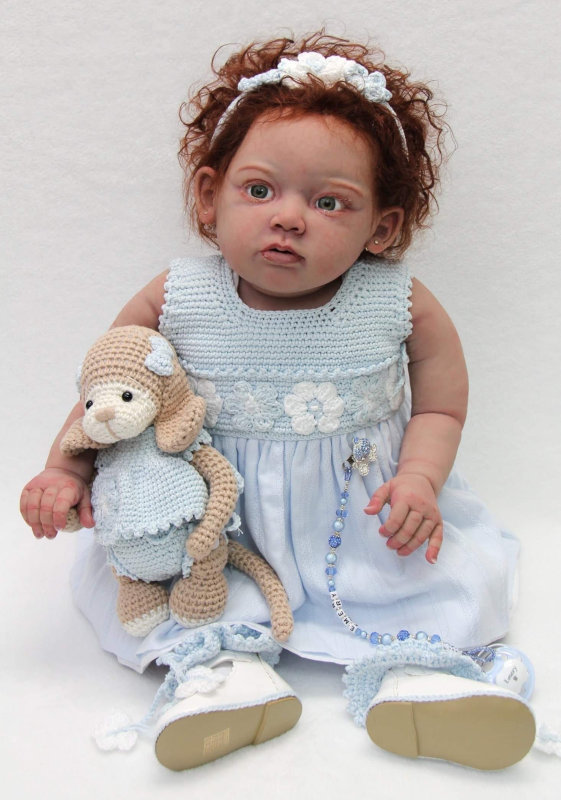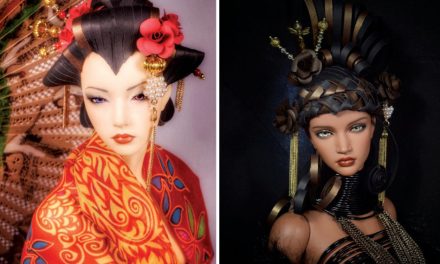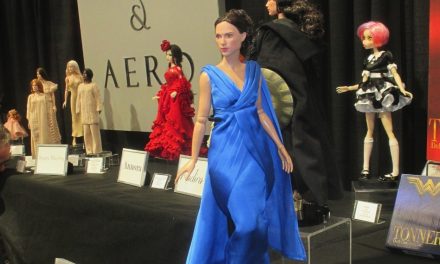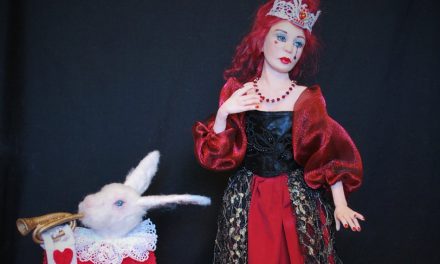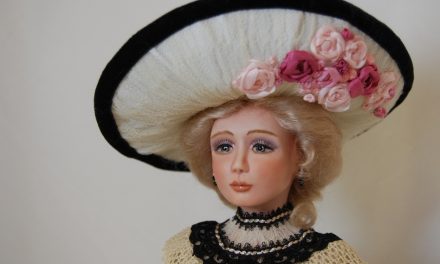
By M. Alisa Benaresh
Lorna Miller-Sands captured collectors’ hearts when she unveiled her first collection of authentic-looking black child dolls at the IDEX show in 1991. She’d been inspired to try sculpting the previous year, while on vacation in Germany, where she visited a doll shop that carried realistic dolls. Upon returning home she bought some clay and started to sculpt.
She thought it would be easy — she was a portrait artist, working in charcoal, and she’d been educated in this art. To her shock, she discovered that sculpting presented new challenges. She trained herself in this new discipline without the aid of classes or books, and her first IDEX show was an overwhelming success. She continued to sculpt these children for nine years, and her many collectors included celebrities who collected doll art.
She created a variety of ethnic child dolls, including Asian, Caucasian, and mixed race. It was important to her that each facial sculpt should have the authentic bone structure and skin tones authentic to the race of the child depicted. In her second decade of dollmaking, she turned her skills to sculpting baby dolls. This time the inspiration came to her after viewing work of renowned doll artist Eva Helland. The two artists grew to become close friends.
Miller-Sands’ infant sculpts ranged in age from one to three months and were made with polymer clay. They were so popular that she couldn’t satisfy her collectors’ demands for her one-of-a-kind (OOAK) creations. Around 2004, Miller-Sands became excited about the possibilities of a new dollmaking medium: silicone. It was difficult and frustrating to use, in the beginning, but the end result was worth the effort.
The finished dolls were even more realistic with the combination of high-quality hand-applied mohair, glass eyes, and the flexible silicone. Miller-Sands continued to create popular limited-edition babies for the next few years.
When a softer silicone came on the market, she was immediately attracted to the idea of creating a special armature for the arms and legs of the baby, a hugely successful innovation. Miller-Sands also made these new babies more realistic by creating a body that could be poured in silicone as one piece. After repeated collector requests, Miller-Sands sculpted a silicone todder doll, Raevyn, which had armature in her arms only and a custom-made doe-suede body the artist had designed for her babies.
Miller-Sands had been concerned that the doll would be too heavy, but it turned out fine. Next she wanted a more posable body. She and her husband set out to create a full-body armature for a toddler doll that could be posed like a real child. After a great deal of trial and error, they were rewarded with a fully posable toddler doll.
New on her agenda for this year is an exclusive platinum silicone edition limited to three dolls worldwide. Each of these dolls will come with an amazing wardrobe of custom knitted outfits, her own high-quality plush animal, and monogrammed accessories, along with a professional photograph of each toddler.
Born in the Bahamas, the artist now makes her home in Tennessee with her husband and four children.

